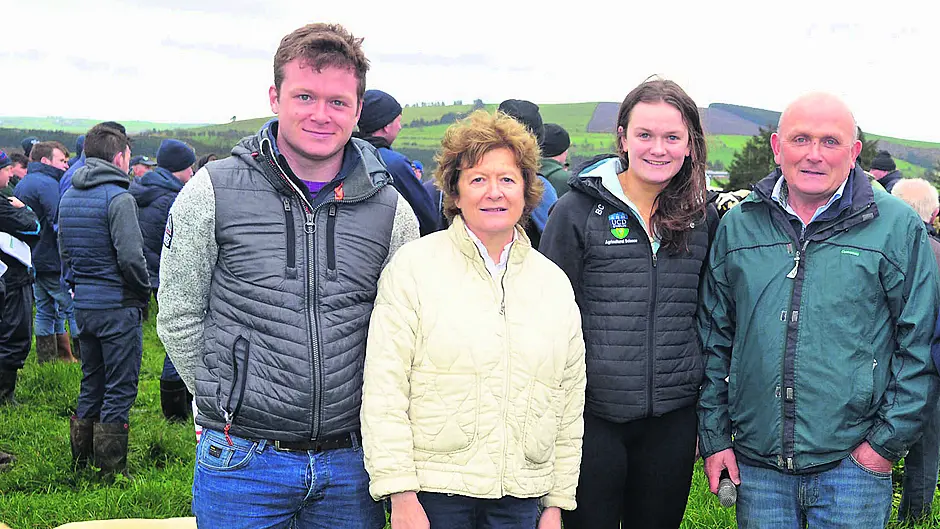Our Teagasc Farm Monitor profile family this week are the Cotters from Coachford who are leaders in the field when it comes to creating sustainable farming methods
JIMMY and Ann Cotter are dairy farming just west of Coachford near Macroom.
They have three children – Miriam, Richard and Bríd.
The Cotters’ farm is one of the Teagasc Signpost demonstration farms in West Cork. This group of farmers are leading the way to reducing GHG emissions on their farms along with improving water quality, biodiversity and increasing profit margins from farming.
Jimmy farms a total of 46.5 hectares with a milking block of 34ha and one outside block of 2km that is used for three cuts of silage. He is currently milking 114 cows.
Improving the economic breeding index (EBI) of the herd is one of the biggest tools dairy farmers can use to reduce carbon emissions. Jimmy has always had a strong focus on EBI and his Jersey crossbred herd has an EBI of €196 which puts them near the top 1% of herds in Ireland. By increasing the herd’s EBI, farmers are breeding a more efficient cow and as fertility improves, less replacements are required, thereby helping to reduce the carbon footprint.
In 2022, Jimmy calved 90% of his herd in six weeks with a replacement rate of 20%. In 2021 he sold 564kg milk solids per cow to compared to the average Dairygold co-op supplier at 437kg milk solids per cow.
This means that Jimmy needed 32 less cows than the average Dairygold supplier to produce the same amount of milk solids. That’s a lot less cows producing emissions and costing more on the farm.
Grazed grass has the biggest influence net profit on dairy farms whilst also reducing farm emissions. 2022 has been a challenging grass year, with Jimmy’s farm just coming out of a drought with extra meal being fed.
He grew 13.6t grass DM/ha in 2021 and with 5.8tonnes grass DM/ha grown he is on target to grow the same tonnage in 2022. Every extra week at grazing reduces GHG emissions by 1% and Jimmy had the cows out to grass on February 3rd this year.
One of the biggest challenges facing all farmers is the reduction of nitrogen on their farms whilst maintaining grass growth. In response, Jimmy has been incorporating and managing clover on the farm for the past three years, with two more paddocks, either oversown or reseeded this year. At present, 51% of the milking platform is being managed as grass clover swards. To the end of June 2022, the grass clover swards have grown 5.5t grass DM/ha using just 76kg chemical nitrogen per ha. The grass only swards which have grown 6.1t grass DM/ha using 155kg chemical nitrogen per ha. Therefore, Jimmy has used 80kg less nitrogen per hectare on grass clover swards and when using a cost of €2.20/kg nitrogen, he has saved €3,040 in fertiliser costs so far this year and will also reduce the carbon footprint.
Jimmy used a combination of over sowing clover and full reseeding. Reseeding is by far the easiest way to incorporate clover on your farm.
Paddocks that have good soil fertility are selected for reseeding and 2kg clover is included with the grass seed mix.
If you have a phosphorous allowance apply three bags/acre of 10:10:20 at sowing or farmyard dung if you have no phosphorous allowance.
It is vital to spray with a clover safe spray when the weeds are the size of a €2 coin and graze the sward at regular intervals.
Jimmy doesn’t apply anymore chemical nitrogen for the remainder of the year but will apply dairy washings two to three times and apply chemical potash.
• Grainne Hurley is a business and technology dairy advisor based in Macroom and is the co-ordinator of the Dairygold joint discussion group programme.










